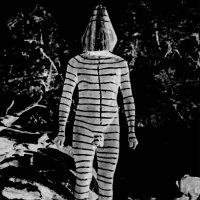Temaukel : The Supreme God
Listen
At a glance
| Description | |
|---|---|
| Origin | Fuegian Mythology |
| Classification | Gods |
| Family Members | N/A |
| Region | Tierra del Fuego |
| Associated With | Supreme Powers, Creation |
Temaukel
Introduction
Temaukel, the supreme deity of the Selk’nam people of Tierra del Fuego, is one of the most remarkable figures in South American indigenous mythology. Unlike many mythological systems where gods embody natural forces or human traits, Temaukel stands apart as an abstract, eternal creator. He was believed to exist before all else, residing beyond the material world and embodying timeless divinity. For the Selk’nam, who endured one of the harshest climates on Earth, Temaukel was not a distant legend but the sacred origin of existence itself. His role was central in shaping a worldview that combined reverence for the cosmos with strict cultural practices.
Though the Selk’nam recognized many supernatural beings, these were largely ancestral spirits—creators of landscapes, animals, and traditions. Temaukel, however, was different. He was not merely another mythological figure but the foundation of their cosmology, occupying a role comparable to a monotheistic god. His transcendence and uniqueness make Temaukel one of the most fascinating deities in world mythology, symbolizing both the mystery of creation and the resilience of an indigenous culture that survived in near isolation for centuries.
Physical Traits
Unlike gods portrayed in human form, Temaukel has no body, no gender, and no face. He is a purely spiritual force, unseen and formless. This incorporeal nature highlights his distance from the earthly realm and reinforces his position as an eternal being untouched by change.
Temaukel was believed to dwell in Wintek, the eastern sky, which held supreme importance in Selk’nam cosmology. The east symbolized renewal, the rising sun, and the origins of life. To the Selk’nam, Temaukel was not a figure one could visualize but rather a divine presence felt through the order of the universe. His abstraction set him apart from the howenh—the mythological ancestors—who often took on human or animal-like forms before transforming into natural features such as mountains, rivers, or stars.
The absence of physical description is not a weakness of his mythology but a sign of ultimate reverence. By being beyond form, Temaukel symbolized the infinite, a god who could not be reduced to human imagination.
Family
Temaukel is solitary. He does not belong to a divine family or pantheon in the conventional sense. Unlike Greek or Hindu gods, whose lineages and rivalries structure myths, Temaukel exists outside such relationships. His solitude reflects his eternal and uncreated essence.
However, he does have a profound connection with the howenh, the mythological ancestors who shaped the world. Among them, the most important is Kenos, whom Temaukel appointed as his agent to bring order to Earth. Kenos organized the world, established the first rules, and gave rise to other mythological figures who later became elements of nature. Yet these beings were not Temaukel’s children; they were his creations and emissaries.
Through this delegation of responsibility, Temaukel appears not as a micromanager of daily life but as the supreme authority who sets the stage for existence. His relationship to Kenos emphasizes his role as originator rather than participant, ensuring that he remains distinct from the rest of the Selk’nam mythic landscape.
Other names
The deity’s name is usually recorded as Temaukel, though variations such as Témaukel or Pémaulk appear in ethnographic accounts. These differences stem from transliterations of the Selk’nam and Haush languages, both spoken in Tierra del Fuego. Because of his sacredness, the Selk’nam were cautious in invoking his name, which added to its aura of mystery and respect.
Unlike gods in polytheistic traditions who are addressed with numerous titles, Temaukel’s uniqueness meant that he was almost always referred to by this single name. His identity was so central and distinct that additional epithets were unnecessary. In modern comparative studies, Temaukel has occasionally been likened to the God of Abrahamic religions due to his role as a transcendent, eternal creator, though his place in Selk’nam spirituality is rooted firmly in its own cultural context.
Powers and Abilities
Temaukel’s powers were absolute, encompassing the creation of the cosmos and the establishment of universal order. According to Selk’nam belief, he existed before all time and created the celestial dome, the Earth, and the first conditions of life. His greatest act of power was appointing Kenos to organize the world, ensuring that humanity, animals, and natural forces had their place.
Unlike deities in mythologies who actively intervene in human affairs, Temaukel remained remote and detached. His divinity was expressed not through dramatic acts of intervention but through his timeless authority. He was omnipotent, eternal, and omnipresent, yet uninvolved in daily human struggles. His teachings and laws, delivered indirectly through Kenos and the howenh, guided the Selk’nam in matters of conduct, morality, and ritual. This separation from human life made Temaukel a god of immense awe rather than intimacy. He was the ultimate source, the unchanging principle that underpinned the Selk’nam worldview.
Modern Day Influence
Although the Selk’nam people were nearly exterminated during the colonial campaigns of the late 19th and early 20th centuries, their mythology—and with it, the legacy of Temaukel—has endured. Missionaries and anthropologists such as Martin Gusinde and Anne Chapman recorded Selk’nam traditions, preserving valuable details about their spiritual life. Thanks to their work, Temaukel remains accessible to scholars and readers today.
In modern times, Temaukel has taken on new life in art, music, and cultural revival. Chilean and Argentine movements to recognize and honor Selk’nam heritage often invoke Temaukel as a symbol of identity and survival. A Chilean black metal band has even adopted his name, linking the deity with themes of cosmic power and ancestral memory. In visual arts, Temaukel is sometimes represented in abstract forms, emphasizing his ineffable, formless essence.
Digital resources and global mythology platforms now include Temaukel alongside gods of other traditions, expanding awareness of Fuegian spirituality. For indigenous activists, Temaukel symbolizes the strength of a culture that, despite near destruction, continues to find recognition and respect. He represents not just a myth but the enduring spirit of a people who lived in harmony with one of the world’s harshest environments.
Related Images
Source
Gusinde, M. (1966). The Selk’nam: Religion and mythology of Tierra del Fuego. Berlin: Akademie-Verlag.
Chapman, A. (1982). Drama and power in a hunting society: The Selk’nam of Tierra del Fuego. Cambridge: Cambridge University Press.
Encyclopedia.com. (2025, September 1). Selk’nam Religion. Retrieved from https://www.encyclopedia.com/environment/encyclopedias-almanacs-transcripts-and-maps/selknam-religion
Wikiwand. (2020, December 31). Selkʼnam mythology. Retrieved from https://www.wikiwand.com/en/articles/Selk’nam_mythology
Kiddle. Selk’nam mythology Facts for Kids. Retrieved from https://kids.kiddle.co/Selk’nam_mythology
Chapman, A. (2008). The Sélknam: An Endangered Cosmology. In Indigenous Worldviews of the Americas (pp. 147-160). London: Routledge.
Stranger Aeons. (n.d.). Temaukel: Gods in the sky, Chilean metal. Retrieved from http://www.stranger-aeons.com/temaukel-gods-in-the-sky-chilean-metal/
Chile Precolombino. Culto y Funebria – Selk’nam. Retrieved from https://chileprecolombino.cl/en/pueblos-originarios/selknam/culto-y-funebria/
Frequently Asked Questions
What is lorem Ipsum?
I am text block. Click edit button to change this text. Lorem ipsum dolor sit amet, consectetur adipiscing elit. Ut elit tellus, luctus nec ullamcorper mattis, pulvinar dapibus leo.
What is lorem Ipsum?
I am text block. Click edit button to change this text. Lorem ipsum dolor sit amet, consectetur adipiscing elit. Ut elit tellus, luctus nec ullamcorper mattis, pulvinar dapibus leo.
What is lorem Ipsum?
I am text block. Click edit button to change this text. Lorem ipsum dolor sit amet, consectetur adipiscing elit. Ut elit tellus, luctus nec ullamcorper mattis, pulvinar dapibus leo.
What is lorem Ipsum?
I am text block. Click edit button to change this text. Lorem ipsum dolor sit amet, consectetur adipiscing elit. Ut elit tellus, luctus nec ullamcorper mattis, pulvinar dapibus leo.
What is lorem Ipsum?
I am text block. Click edit button to change this text. Lorem ipsum dolor sit amet, consectetur adipiscing elit. Ut elit tellus, luctus nec ullamcorper mattis, pulvinar dapibus leo.







